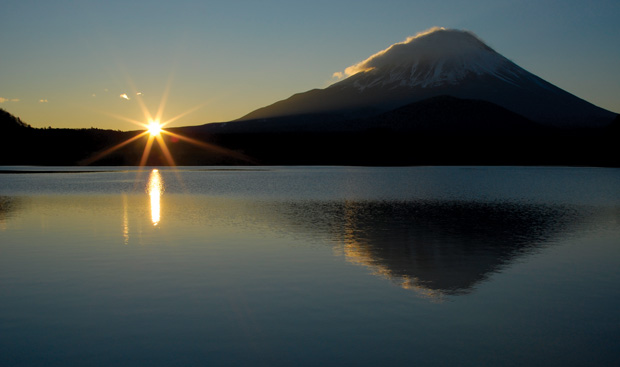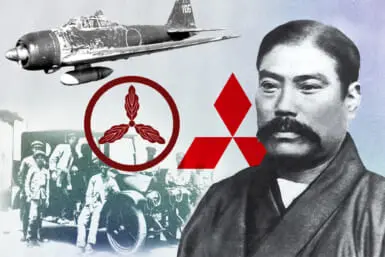While traditions may differ, the spirit is equally focused on friends, family and food.
Any Western visitor to Japan who plans to celebrate the New Year here will not see the expected hoopla and fireworks of his home country. It’s the one time of the year when the streets of Tokyo are empty, restaurants and stores are closed, and the general atmosphere around town is one of quiet. Between Jan. 1 and 3, Japan celebrates the New Year, called Shogatsu, with its own particular set of traditions. Like many customs in Japan, the ones surrounding New Year are varied and myriad, and people adhere to them strictly, even in today’s global world.
Some of the traditions begin before Dec. 31. Japanese companies have bonenkai, which are end-of-year parties with a twist. They are meant as “year-forgetting” parties, aimed at throwing out all of the prior 12 months’ ills and issues and starting with colleagues with a fresh, new attitude. These are not to be confused with shinenkai, which celebrate the first party of the New Year. Both types of parties take place within companies or classes of students in universities, not with outside friends or family.
Similar to many Western countries where people send Christmas cards, Japanese people send out New Year’s cards called nengajo. These range from a small postcard to an elaborate printed message and image. The purpose is to greet people whom they do not see over the year and to share news. Interestingly, all of these cards are marked with the word nengajo on the outside so that the post office recognizes them and can ensure delivery within the New Year’s period.
Many people in Japan send New Year’s gifts to friends and colleagues. Called oseibo, these gifts are usually comprised of beautifully packaged consumables. A case of beer, boxes of nori seaweed, or fancy soy sauces from various department stores or shops can all be sent directly to the recievers (In the past, people would hand-deliver these gifts).
There are even special decorations for New Year’s that start appearing at the beginning of December. Called kadomatsu, these reedy ornaments are comprised of pine branches, bamboo and straw. The pine represents long life, and the bamboo is a symbol of strength. Japanese people place them on their gates and doors so that they will last through the first of the year.
Many of the New Year’s traditions are meant as cleansing rituals, designed with an eye for new beginnings. People might do extensive cleaning in their homes and even of their clothes. All of the agendas surrounding this time period revolve around New Year’s “firsts,” so a keen sense of renewal permeates the air.
The actual festivities begin on Dec. 31 as in many other countries, however, it’s not a fireworks-and-music type of celebration. New Year’s in Japan is a time when people go together with their families to visit shrines and temples. Many people who live in Tokyo, if they came from other parts of the country, will return to their native homes to spend time with their families.
One of the biggest traditions of New Year’s Eve is the chiming of 108 bells at Buddhist temples at midnight.
Buddhists believe that there are 108 sins of the human condition and the ringing of the bells of a temple 108 times expiates people of those sins, so that they can begin each year with a clean slate. Some people, as well, stay up past midnight all the way to dawn on Jan. 1 to see the first sunrise of the year, called hatsuhinode.
After the customary to visit Buddhist temples on New Year’s Eve, many Japanese stop by Shinto shrines on New Year’s Day to celebrate hatsumode, the first shrine or temple visits of the year. Once at either, depending on the crowds, people try to get as close as they can to the main altar, where they throw money as an offering, clap to summon the gods, and then pray for health and success for themselves and their families in the New Year. The temples and shrines all over Japan will have festival atmospheres with food stands and souvenir shops abounding.
On New Year’s Day, people begin using the traditional greeting “Akemashite omedeto gozaimasu,” which, beyond just “Happy New Year,” wishes others congratulations on reaching the new year. The greeting can be used throughout January when encountering a friend or colleague for the first time that year. Also, New Year’s day is one of only two days a year (the other being the Emperor’s Birthday on Dec. 23) when the inner garden to the Imperial Palace is opened, and members of the royal family come out on a designated balcony at specific times to greet visitors and wave.
New Year is a fun and special time for children. Many receive pochibukuro, which are small, red envelopes containing money, part of the practice of otoshidama. Custom dictates that young children, who like to hear jingling, receive coins, and older children, who prefer larger amounts, get bills. There are also many traditional games that children play at New Year’s, including kite flying, top-spinning, hanetsuke, which is similar to badmitton but without a net, and karuta, a Japanese card game.
As families get more caught up in modern life, some things are changing. It is becoming more common for people to take vacations overseas instead of spending the time with their families. There are more and more catering companies that will do the Osechi (see sidebar) for families instead of the women working so hard to prepare them before Dec. 31. Still, the traditions remain with the Japanese people and even the most modern of families will keep the ones that are possible for them. Generally by Jan. 4, though, it’s business as usual throughout the country. People go back to work renewed and refreshed, ready for the challenges and joys of the new year. (Aimee Weinstein)
Read More: New Year’s delicacies
YUICHI PHOTO









